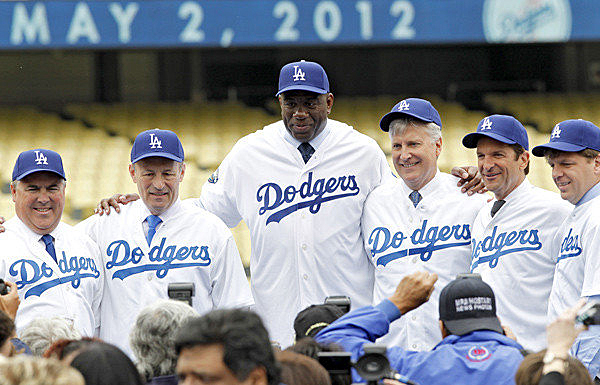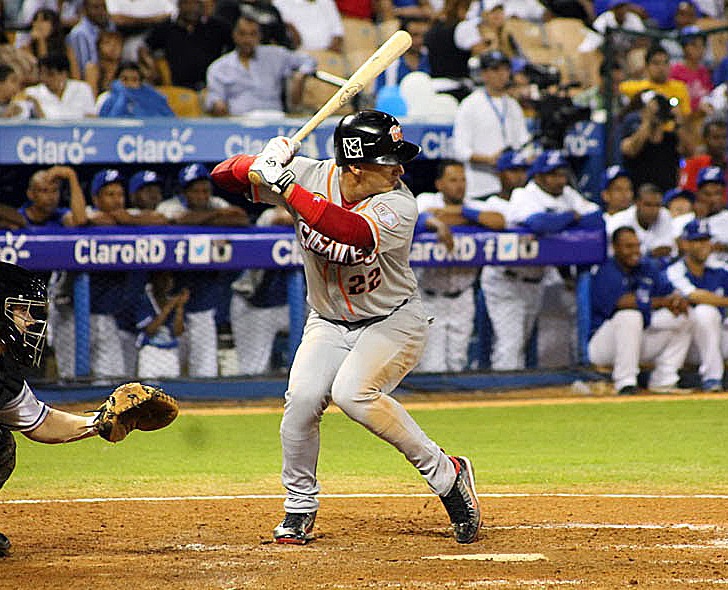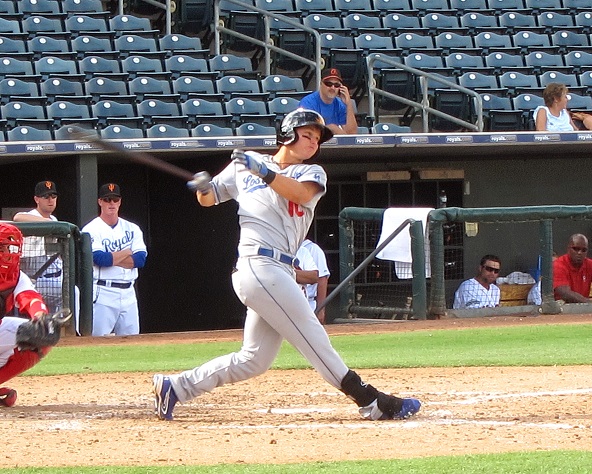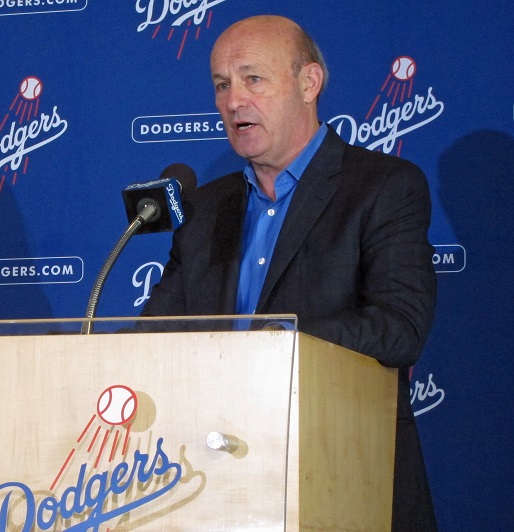We often read that Dodgers fans have suffered through the past twenty-five years. I think suffering is a bit of an overstatement as we still had “Dodgers” scripted on the front of our favorite jerseys. We still had the memories of the years the Dodgers showed the way to all MLB franchises and became known as a storied franchise. We still had that ever present hope on opening day in each of those years.
For me it was not so much suffering but more so a regret that the “Dodger Way” had given way to a desperation to win again at all costs with little regard for the future years. That regret became a bit of an embarrassment in the final years of the Frank McCourt ownership when his personal life problems overshadowed his seeming disconnect with baseball reality and especially with the fans who remained so faithful to the team in disastrous times. There is little wonder that the McCourt years hung over the Dodgers like the ever persistent rain cloud hanging over the head of Bad Luck Schleprock from the Flintstones.
Then, in the spring of 2012 it happened. The rain cloud dissipated. The McCourt era ended. The Guggenheim Partners made a successful bid to purchase the Dodgers for a whopping $2.15 billion, more than doubling the previous record for a MLB team – $845 million for the Chicago Cubs in 2009. The Guggenheim bid was $850 million more than the next highest bid for the Dodgers, a bid placed by Steve Cohen. One wonders why the new owners paid so much for the Dodgers and why so much more than the next highest bidder. Was it just because they could? Did they not do their homework before the bid? Were big egos involved? Stan Kasten offered an explanation for the huge purchase price.

The Guggenheim Baseball Management Group (L to R)- Bobby Patton, Stan Kasten, Earvin ‘Magic’ Johnson, Mark Walter, Peter Guber and Todd Boehly. (Photo credit – Robert Gauthier)
“So why did we pay $2.1 billion for the Dodgers?” Kasten said one morning in his office. “I like to echo what Mark (Walter) says. We bought it for $2.1 billion because we thought it was worth more.”
That’s a WOW moment. The Guggenheim group felt they were getting a good deal, perhaps a bargain.
With money no longer a concern, Stan Kasten again served as a spokesman for the group defining their Dodger goal.
“Our mission was very simple, restore the Dodgers,” the 61-year old Kasten said. “Easy to articulate; complicated and hard to achieve. We didn’t invent the Dodgers. We didn’t invent the Dodger way of doing things. We had to try to get it back. It seems to have gotten lost in recent years for whatever reasons.”
The plan seemed to be to restore the Dodgers as quickly as possible as a household name and to get the Dodgers on the inside track in major league baseball once again. That plan evolved very quickly in 2012, a plan that concerned me as it amounted to a spending spree. Hanley Ramirez was acquired from the Florida Marlins while Adrian Gonzalez, Carl Crawford, Josh Beckett and Nick Punto came over to the Dodgers in a trade with the Red Sox. Andre Ethier’s contract was extended for six years. During the off season Hyun-jin Ryu and Zack Greinke were signed as free agents along with Yasiel Puig. Most recently Alexander Guerrero has been signed as an international free agent.

Cuban infielder Alexander Guerrero is the latest international free agent to be signed by the Dodgers international scouting staff. He is currently playing in the Caribbean Winter League with the Gigantes del Cibao. (Photo courtesy of lapelotanuestra.com)
My concern is the team quickly became the highest spending team in baseball history with a number of players on long term contracts – several extending beyond their prime years: Adrian Gonzalez (2018), Carl Crawford (2017), Hyun-jin Ryu (2018), Zack Greinke (2018), Andre Ethier (2017), Yasiel Puig (2018), Matt Kemp (2019), Alexander Guerrero (2017). Clayton Kershaw and Hanley Ramirez are yet to be extended. In a very few years this team will be getting a bit long in the tooth even though there are some young players among that group. This plan certainly isn’t reminiscent of the Dodger Way. Dare I mention it looks somewhat like the Yankees of the west.
But wait… there’s more! – and this is the part I like – Plan B.
During the McCourt years, dollars to invest in international signings fell to a major league low of $200,000. Former assistant GM Kim Ng wrote letters to Frank McCourt telling him the lack of international scouting was killing the team. Free agency offers some interesting choices periodically for a team but the lifeblood of any organization lies not in the free agent deals, but in scouting and development. Again, enter Stan Kasten with a first order of business. Ned Colletti’s international budget was immediately increased to $1.5 million. His staff of international scouts was increased to fifteen from a low of four (and you wonder why the Dodgers’ international signings fell off the radar).
The task of growing the farm is no small order of business. In 2013 the Dodger farm system got the following rankings: Baseball America (18th), Prospect Digest (21st), Keith Law (18th), Baseball Prospectus (21st), Prospect Pipeline (15th), John Sickels (19th). Rankings are just that – rankings, and are based primarily on speculation and personal opinion – but those of us who follow the Dodger farm system closely know there are not many blue chip prospects on those minor league teams.

Joc Pederson could very well be the next homegrown prospect to make it to the big leagues as a Dodger. He is currently playing in the Venezuelan Winter League, having played in the Arizona Fall League in 2012. (Ron Cervenka – ThinkBlueLA.com)
How does a team grow the farm? The easy step is to increase the budget for signing international players and draft picks, although there are new limitations on how much can be spent to sign players in both categories. The Dodgers are already doing this; however, top quality players can’t be signed if they can’t be found. The most important step is to have an elite scouting and development team that can find the hidden gold nuggets and make sure they don’t become fool’s gold.
This is the encouraging part for me as we know that the kids signed now will be MLB-ready in the next 4-5 years. The Dodgers have furnished Logan White, Vice President Of Amateur Scouting, with an elite team of international scouts. This international scouting team, many former Mariners scouts, now includes:
- Bob Engle – Vice President, International Scouting
- Patrick Guerrero – Coordinator Latin America
- Pat Kelly – Coordinator Pacific Rim
- Jamey Storvick Special Assignment Scout Pacific Rim
- Eugene Grimaldi – European Coordinator
- Pedro Avila – Coordinator Venezuela
- Mike Tosar – Coordinator Mexico
- Isao O’Jimi – Head Scout Japan
Most recently the Dodgers hired Roy Clark as their National Cross Checker. Just as the Seattle scouting team was wrestled away from the Mariners, Roy Clark has been pried loose from the Washington Nationals. That sounds as if the Dodgers stole these scouts in the dark of the night. However, one suspects they were eager to join an organization that was shooting for the MLB moon. Clark, in particular, perhaps was anxious to reunite with Kasten. The two of them had experienced considerable success while together in Atlanta and Washington. From 2010 through 2012 the Washington farm system, as rated by Baseball America, rose from the middle of the pack to first overall.
Plan B sounds like a fall back plan if Plan A fails. However, in this case, Plan B over the next few years will emerge as Plan A, a plan I have been waiting to embrace again after 25 years of wandering aimlessly in the free agent wilderness.
Here’s the music to my ears and how Kasten (who calls Plan B ‘Phase II’) sums it up:
“We’re in the latter phase of Phase I and the beginning of Phase II,” Kasten said. “But we’re not fully into Phase II.”
Phase I was to bring the Dodgers into instant competitiveness, to reward and re-energize the loyal fans with stadium improvements and to develop a long range plan for the team. Mission accomplished. All the while, Phase II is taking shape right before our very eyes.
Yes indeed, it is a great time to be a Dodger fan.




 December 3rd, 2013 at 6:00 am
December 3rd, 2013 at 6:00 am  by Harold Uhlman
by Harold Uhlman 
 Posted in
Posted in 

RT @Think_BlueLA: New post: Dodgers – Plan B – http://t.co/E2Z0An0TDQ #Dodgers #Dodgerfam
Phase II, or as you call it BD, Plan B is still in the waiting stage or in early developement but the way I see it Plan I has work out as well as it could be expected with the Dodgers becoming a true contender which is something that was hard to tell before the Guggenheim Partners took over. This looks like a group that won’t stop until the Dodgers are annual postseason champions with some Fall Classic victories.
Great post, Harold.
Unfortunately, I see their lips moving and I hear their rhetoric, but until I begin seeing some of these top minor league prospects on the (Dodgers) 25-man roster, it’s all hyperbole and propaganda to me. The proof, as they say, is in the pudding.
Colletti has a long (and uncomfortable) history of trading away the farm and he currently has several ‘gold nuggets’ (as you call them) in his pouch who I pray that he does not trade away, as he has done so often in the past.
I somewhat share your skepticism but have not felt this confident in the future since the Dan Evans days.
There are some signs such as signing MLB ready international players, not trading for Jim Johnson. I understand some of them might be traded but I think the plan is to trade for younger players.
Stan Kasten’s experience in Atlanta and Washington are his backdrops for success. I think he will keep Ned Colletti in check.
I am quite happy thus far with the Dodger’s slowness to move this winter. They don’t appear to be taking the bait of expensive players with defects. Although the media continues to focus a bit on other team’s interest in Kemp, I just don’t think they would be stupid enough to deal him after a down year. The Dodgers really don’t need to make a lot of moves beyond 3B and pray that Alexander Guerrero is up to snuff (and he looks good in limited at bats in Puerto Rico). A one year deal with Wilson would be fabulous and keeping Howell would be divine. If Uribe would sign a reasonable deal shorter than 3 years, I say jump on it, close the shop for the winter and don’t deal any prospects. Very happy to stand pat without uprooting the farm.
As you say Harold, I hope it’s time for Phase 2 to take hold. Time will tell